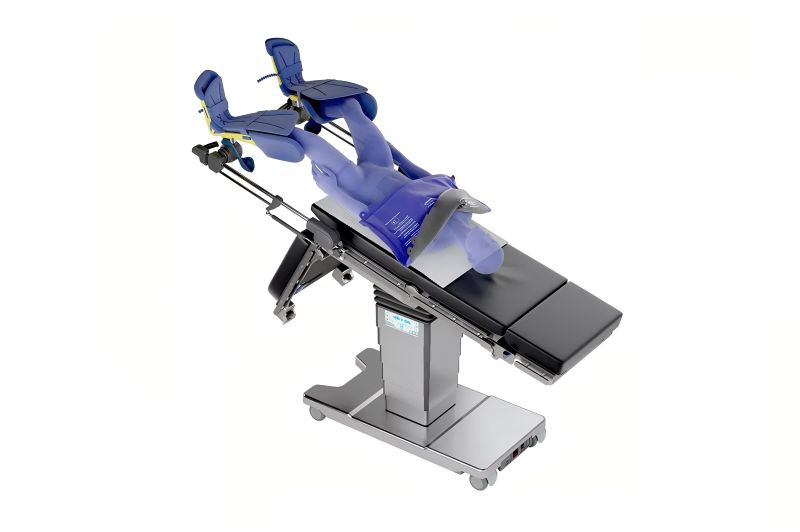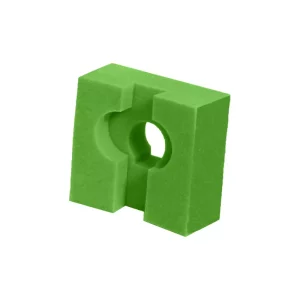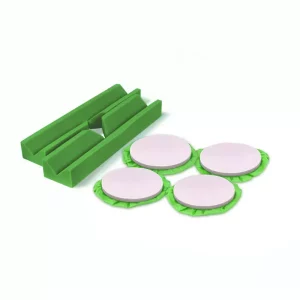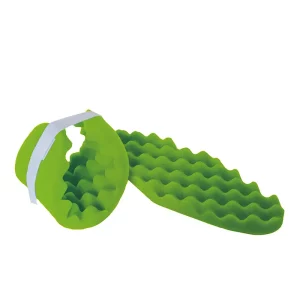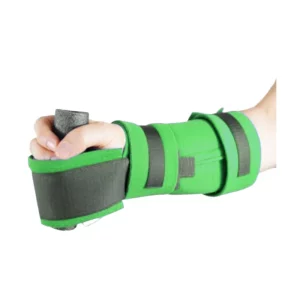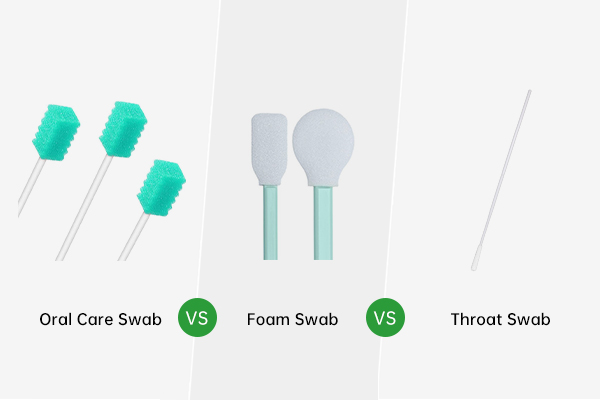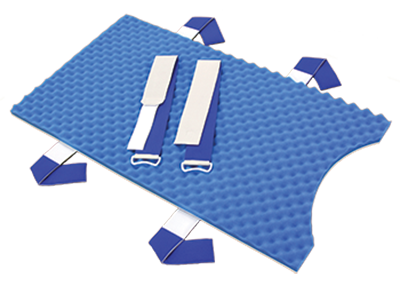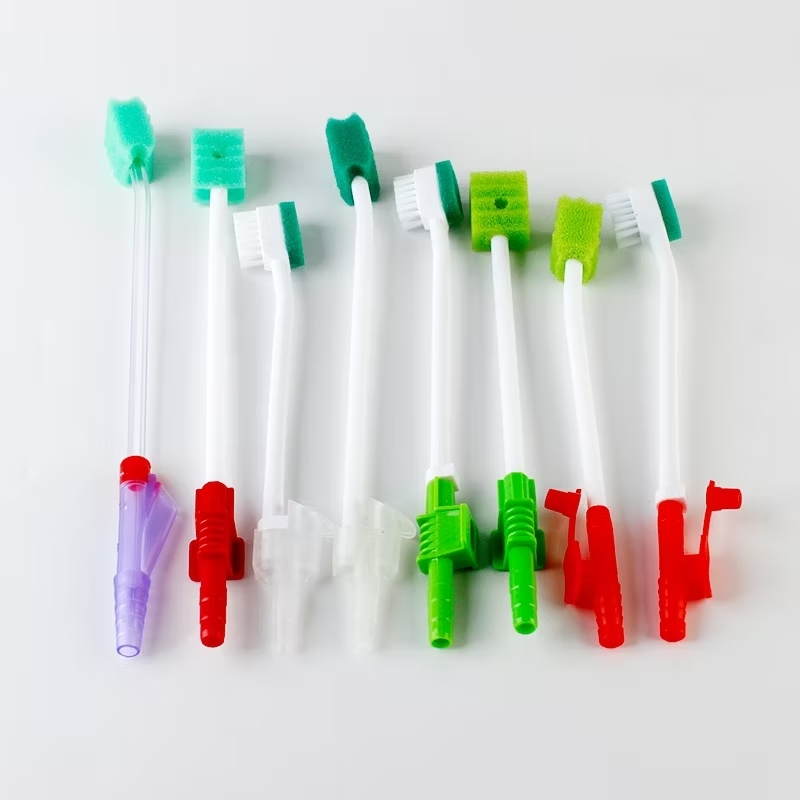Patient positioning is crucial in healthcare for comfort, effective procedures, and preventing complications like pressure sores. Foam positioners are essential for maintaining alignment, and comfort, and preventing injury. This article covers different types of patient positioning and the positioning pads required for each.
The Importance of Positioning Pads
Positioning pads are used in various medical settings to support patients, maintain their posture, and redistribute pressure on the body. These pads come in various materials, sizes, and shapes, depending on the procedure and positioning. They serve multiple purposes:
- Support: Positioning pads help maintain correct alignment, ensuring that the patient is positioned correctly for medical procedures, such as surgery or diagnostic imaging.
- Pressure Redistribution: By reducing pressure on specific body parts, these pads prevent pressure ulcers (bedsores), nerve compression, and other complications associated with prolonged immobility.
- Comfort: They offer cushioning for patients, ensuring they remain comfortable during long procedures or recoveries.
- Stabilization: Positioning pads also help stabilize patients, especially those who may be sedated or unconscious, preventing unintentional movement that could lead to injury.
Types of Patient Positioning and the Positioning Pads Used
1. Supine Position
The supine position is when the patient lies flat on their back, often with their arms at the sides or extended over the head. This position is used for a variety of medical procedures, including general surgeries, X-rays, and physical examinations.
Positioning Pads Needed:
- Head positioner and Neck Pad: To support the neck and maintain cervical alignment, a cervical roll or headrest cushion can be placed under the patient’s head to prevent hyperextension or flexion of the neck.
- Heel Protectors: To prevent pressure ulcers on the heels, heel pads or specialized heel booties are used. These pads aid in redistributing pressure away from the heel’s bony protuberance.
- Sacral Pad: To protect the sacral area (lower back) from pressure sores, sacral cushions are placed under the lower back. These pads prevent prolonged pressure on the sacrum during surgery or extended procedures.
- Wrist and Elbow Pads: To avoid pressure on the elbows or wrists when the arms are positioned at the sides, soft arm pads or pillow supports are used.
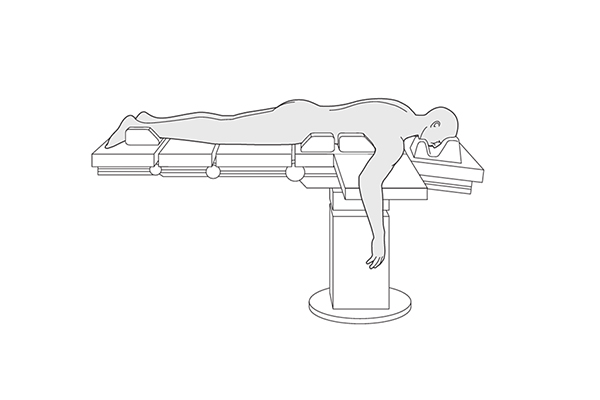
2. Prone Position
The patient lies face down in the prone position, with their head turned to one side and their chest and abdomen resting on the bed. This position is used for spinal surgeries, back surgeries, or to improve oxygenation in patients with respiratory distress.
Positioning Pads Needed:
- Face and Eye Cushion: A face cushion or head pad is necessary to support the face and prevent pressure on the eyes and facial bones. Usually, these cushions feature holes to guarantee that the patient’s airway stays clear.
- Chest and Abdomen Support Pads: Soft foam or inflatable pads are used under the chest and abdomen to relieve pressure on the internal organs and provide comfort during prolonged periods in the prone position.
- Knee Pads: For added comfort, knee cushions or foam knee supports are placed beneath the knees to reduce pressure on the knee joints and the patella.
- Heel and Ankle Protectors: As the patient’s legs remain extended in this position, heel protectors or ankle pads are used to prevent ulcers or skin damage due to pressure.
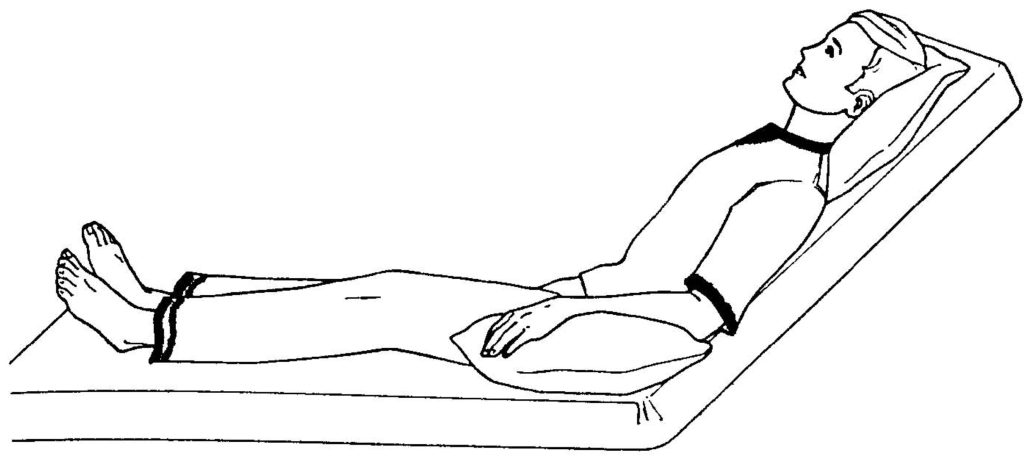
3. Fowler’s Position
In Fowler’s position, the patient’s upper body is raised to between 45 and 60 degrees, with the knees slightly flexed. This position is often used in patients with respiratory difficulties, post-operative recovery, or for examination purposes.
Positioning Pads Needed:
- Headrest Pads: A soft headrest cushion or neck support is necessary to maintain proper cervical alignment when the head is elevated.
- Knee Roll Pads: A knee bolster or knee pad is used to support the legs and prevent sliding down the bed. This helps maintain the correct angle for the hips and knees.
- Backrest Pad: To ensure the patient’s back is properly supported, a lumbar cushion can be used to prevent excessive arching and to maintain comfort during extended periods in this position.
- Foot Pads: Placing footrests or foot pads beneath the feet helps to keep the patient’s feet in a neutral position and prevents pressure on the heels or toes.
4. Lithotomy Position
The lithotomy position is commonly used during childbirth, gynecological, and urological procedures. The patient rests on their back in this posture, with their legs in stirrups and their hips and knees flexed.
Positioning Pads Needed:
- Stirrup Padding: Soft, cushioned pads are placed in the stirrups to protect the patient’s legs from pressure and friction. These stirrups should have adjustable padding to accommodate different body types.
- Cushioning for the Pelvis: A pelvic cushion or wedge pad is used to prevent direct pressure on the pelvic region, which can cause discomfort during extended procedures.
- Foot Protectors: In some cases, foot pads or footrests are used to support the patient’s feet in stirrups, preventing unnecessary strain on the ankles and feet.
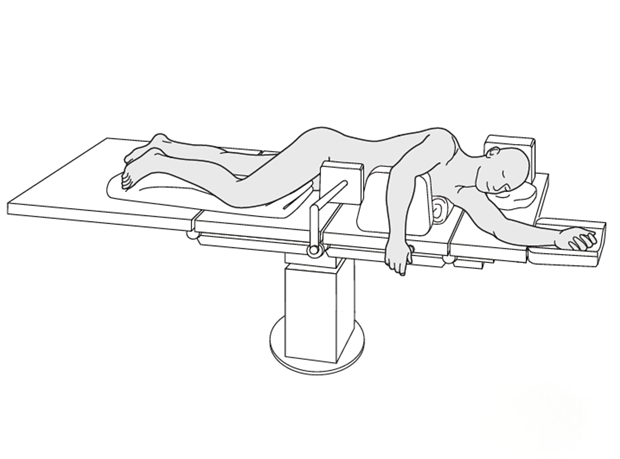
5. Lateral Position
The patient lies on their side, one arm outstretched and the other lying in front of their body when they are in the lateral position. This position is often used for thoracic and kidney surgeries, as well as post-operative recovery.
Positioning Pads Needed:
- Side Support Cushions: Lateral positioning pads or foam wedges are used to support the patient’s upper arm and prevent the body from rolling forward or backward. These pads are essential for stabilizing the patient in this position.
- Knee and Ankle Cushions: A knee bolster or knee pad is placed between the knees to prevent pressure sores and promote comfort. Ankle pads are also used to cushion the lower leg and reduce pressure on the bony prominences of the ankle.
- Head and Neck Support: A head cushion or neck roll is essential for maintaining head alignment and preventing strain on the cervical spine. These cushions are typically placed under the neck or head to keep the body in a neutral position.
6. Trendelenburg Position
In the Trendelenburg position, the patient is tilted so that their head is lowered and their legs are elevated. This position is typically used in cases of hypotension or to improve blood flow to vital organs.
Positioning Pads Needed:
- Head and Neck Cushion: A headrest pad is required to prevent the head from tilting back too far, which could cause strain or obstruct the airway.
- Pelvic and Sacral Support Pads: Sacral pads or foam wedges can be used to support the pelvic region and redistribute pressure away from the sacral bone.
- Heel and Ankle Cushions: Heel protectors are used to prevent pressure sores on the heels, especially when the legs are elevated for extended periods.
7. Reverse Trendelenburg Position
The reverse Trendelenburg position involves elevating the head and torso while the legs remain flat. It is commonly used for patients with respiratory issues, gastrointestinal problems, or for post-abdominal surgeries.
Positioning Pads Needed:
- Head and Neck Support: A head cushion or neck roll is essential to maintain proper alignment of the head and neck when the torso is elevated.
- Back and Lumbar Cushions: Lumbar support pads are used to maintain spinal alignment and comfort during long procedures in this position.
- Foot and Heel Pads: Foot cushions and heel protectors are crucial to prevent pressure sores and support the feet, especially when the patient is positioned with the head elevated.
Conclusion
Proper patient positioning is vital in healthcare, and positioning pads ensure safety, comfort, and procedure effectiveness. Each position—supine, prone, Fowler’s, lithotomy, lateral, or Trendelenburg—requires specific pads to redistribute pressure and protect vulnerable areas like heels and elbows. Using the right pads and alignment prevents complications and enhances patient care.

